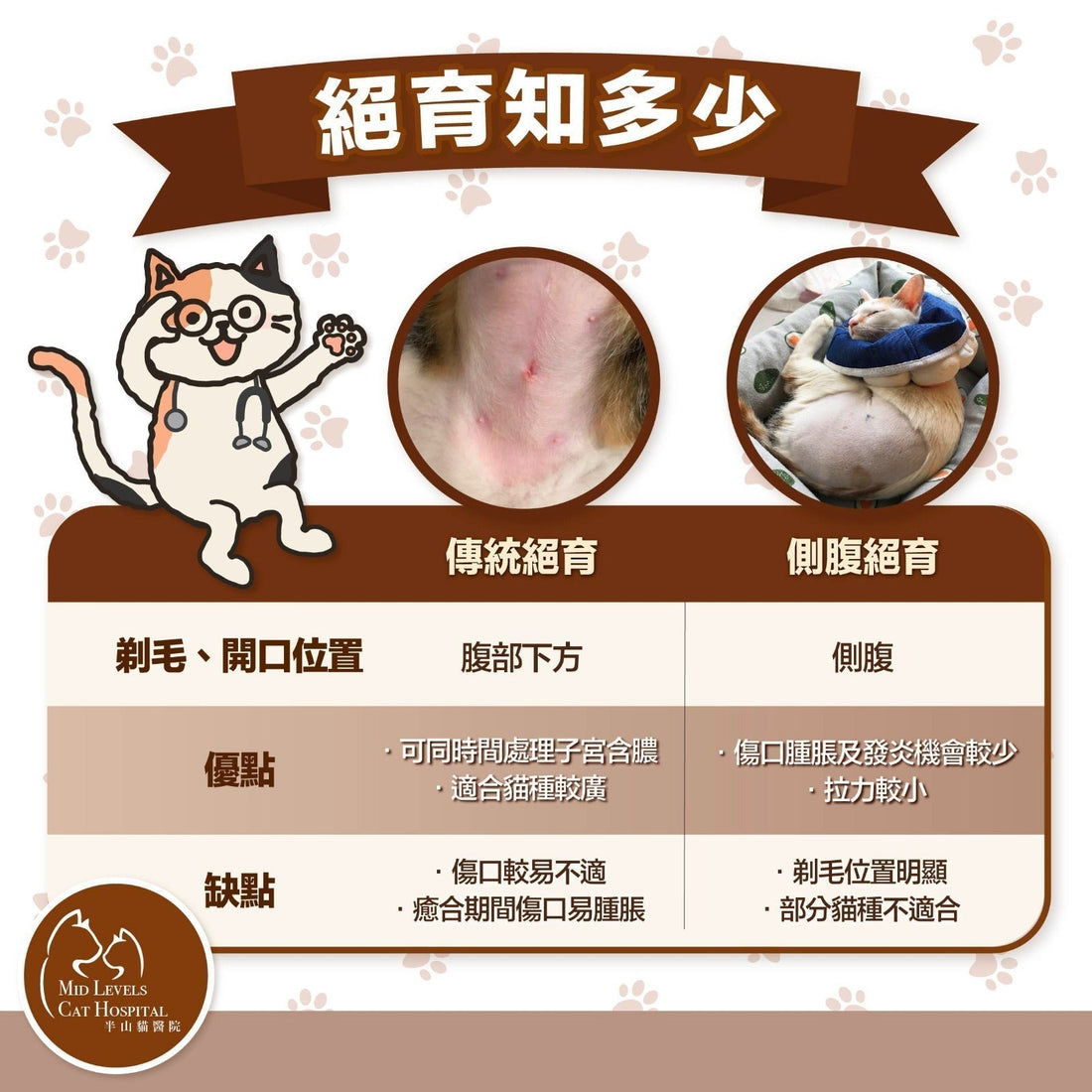What is the difference between traditional spaying and flank spaying surgery for cats?
Traditional spaying involves removing the uterus and ovaries through an incision in the abdominal area. This method opens the abdominal cavity and makes it easier to locate the source of heavy bleeding during surgery. It is suitable even if the cat has a Pyometra. However, the abdominal area is a high-stress area that is often in contact with the ground, making it more prone to swelling and inflammation during the healing process.
On the other hand, flank spaying involves an incision in the flank area, which is less likely to cause swelling and inflammation. This method also makes it easier for the owner to observe the wound. However, it is not suitable for cats with Pyometra and breeds such as Siamese and Persian cats, as the shaved area on the flank may turn black.
Traditional spaying:
Safer: It is easier to locate the source of heavy bleeding during surgery
Wider suitability: suitable even if the cat has a Pyometra
Worse healing: the abdominal area is a high-stress area and is often in contact with the ground, which can cause swelling and inflammation of the wound
Flank spaying:
Better healing: the flank area is not a high-stress area and is less likely to cause swelling and inflammation
Easier to observe the wound
Narrower suitability: not suitable if the cat has a Pyometra, and not suitable for breeds such as Siamese and Persian cats given the shaved area on the flank will turn black
Note:
Before surgery, the veterinarian will numb the area around the testicles to minimize pain
Spaying can be performed during the cat's estrous period
Each estrous period increases the risk of mammary cancer, so it is important to spay as soon as possible to reduce the risk of disease.
Book now or inquire at 26880013.
WhatsApp us now!
https://wa.me/message/UCVFLLNGC2FTP1

